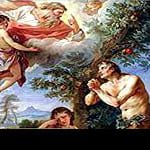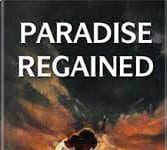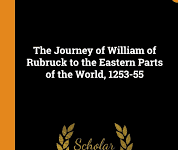Nature in the Poetry of Emily Dickinson
Nature in the Poetry of Emily Dickinson
Nature in the Poetry of Emily Dickinson
Miss Emily Dickinson (1830-1886), a great American poetess, had been living throughout the late English Romantic Age and went something under the influence of the English Romantic Movement. Her portrayal of Nature was not Romantic to the true sense of the term—because unlike the English Romantic Poets she did not seek peace, beauty, mystery, moral lesson and joy in the objects of Nature. She, on the contrary, portrayed nature as it was. Sometimes she takes delight and sometimes she mocks at natural objects. She seeks no wisdom, no lesson in nature. She only shows the external aspects of nature with their transience. Sometimes Nature becomes hostile to her. Hence her portrayal of Nature may be called sentimental and whimsical having no fixed aim or philosophy. But it is worth praising that she has brought into account the trifling objects and beings like—bees, flies, caterpillars, whining birds, frogs, snakes, lizards etc. and the natural phenomena such as—storms, seasons, sunrise and more she has given a good portrayal of various kind of followers, such as—rose, buttercups, daisy, lotus etc. But in many poems, she takes all these objects of Nature not as a primary or main theme but as a metaphor to explain her thought and feeling in poetry. A close study of her major poems shows us how she treated the objects of Nature in her poetry.
In the poem entitled ‘Before I Got My Eye Put Out’, the poetess has expressed her views on Nature that Nature is vaster than her eyes and mind can catch. It is full of mystery and beyond comprehension. Nature is infinite and she is finite. She only takes delight in its external beauty and leaves the internal mystery that lies within it. The poetess says:
‘But were it told to me—Today—
That I might have the sky
For mine—I tell you that my Heart
Would split for size of me—’
Emily Dickinson’s objects of Nature seem to be alien and indifferent to man. They are always natural and wild. Her nature has not taken the poetess to be her own. Nature is always Nature and beyond it there is nothing. In the poem ‘A Bird Came Down the Walk’, she shows Nature to be so. In this poem, she notices a bird eating a worm. Noticing the bird, she offers a ‘crumb’ of her but the bird flies away being indifferent to the poetess. She says:
‘Like one in danger Cautious
I offered him a crumb
And he unrolled his feathers
And rowed him softer home.’
Sometimes, Dickinson’s portrayal of Nature leans toward mysticism. Nature is the expression of an unknown Being. But there is also a doubt. In the poem ‘To Hear Oriole Sing’, she writes:
‘To hear an Oriole sing
May be a common thing—
Or only a divine.
…………………….
It is not the Bird
Who sing the same, unheard
As unto crowd.’
Nature is not always friendly to Emily Dickinson, though she thinks the beings of nature to be so. Sometimes nature and its objects stand hostile to her. In the poem, ‘A Narrow Fellow in the Grass’, she thinks the snakes are friendly to her, but the snake seems not to be so. She writes:
‘Have passed, I thought a whip lash
Unbraiding in the sun
When stopping to secure it
It wrinkled and was gone.’
Emily Dickinson thinks that Nature is changing and with the change of season the forms and motives of Nature also change. In the poem ‘Further in Summer than the Birds’, she portrays a well-known insect, the cricket to be a symbol of pathos in winter. He says:
Further in summer than the Birds
Pathetic from the Grass
A minor Nation celebrates.
Its unobtrusive Mass
……………………..
……………………..
Remit as yet no Grace
No furrow on the Glow
Yet a Druidic Difference
Enhances Nature now.’
Emily Dickinson has portrayed the seasons of summer, winter and spring in her poetry with their respective common symbols. Spring for her is full of beauty and charm, and so is summer with its own freshness. And so winter stands as a symbol of grim, melancholy and sorrow. She praises spring to be the best. In the poem ‘A Light Exists in Spring’, she says:
‘A Light exists in spring
Not present on the year
At any other period—
When March is scarcely here.’
Emily Dickinson, like a true romantic, sometimes gives a very sensitive description of natural phenomena. In the poem ‘I’ll Tell How the Sun Rose’, she gives a very fascinating description of the sun rising scene as—
‘Blazing in gold and quenching in purple
Leaping like leopards to the sky.’
Thus from the above analyses, it is seen that Emily Dickinson’s portrayal of Nature is romantic no doubt but she has no definite phase with definite philosophy. 0 0 0
Nature in the Poetry of Emily Dickinson
Read More: The Theme of Love in the Poetry of Emily Dickinson
Nature in the Poetry of Emily Dickinson
N. B. This article entitled ‘Nature in the Poetry of Emily Dickinson’ originally belongs to the book ‘Emily Dickinson’s Poetry: A Thematic Study‘ by Menonim Menonimus. Nature in the Poetry of Emily Dickinson
Books of Literary Criticism by M. Menonimus:
- World Short Story Criticism
- World Poetry Criticism
- World Drama Criticism
- World Novel Criticism
- World Essay Criticism
- Indian English Poetry Criticism
- Indian English Poets and Poetry Chief Features
- Emily Dickinson’s Poetry-A Thematic Study
- Walt Whitman’s Poetry-A Thematic Study
- Critical Essays on English Poetry
- Tawfiq al-Hakim’s Novel: Return of the Spirit-An Analytical Study
- Tawfiq al-Hakim’s Novel: ‘Yawmiyyat Naib Fil Arayaf’-An Analytical Study
- Analytical Studies of Some Arabic Short Stories
- A Brief History of Arabic Literature: Pre-Islamic Period …
Related Searches:
- Poem on Nature of Emily Dickinson
- Emily Dickinson as a Poet of Nature
- Theme of Death in the Poetry of Emily Dickinson
- Concept of Death in the Poetry of Emily Dickinson
- Mysticism of Emily Dickinson
- Mysticism in the Poetry of Emily Dickinson
- Emily Dickinson Biography
- Emily Dickinson-Poetry Foundation
- Emily Dickinson’s Collected Poems Themes
- Major Themes of Emily Dickinson’s Poetry
- Emily Dickinson: Poems and Poetry Analysis











